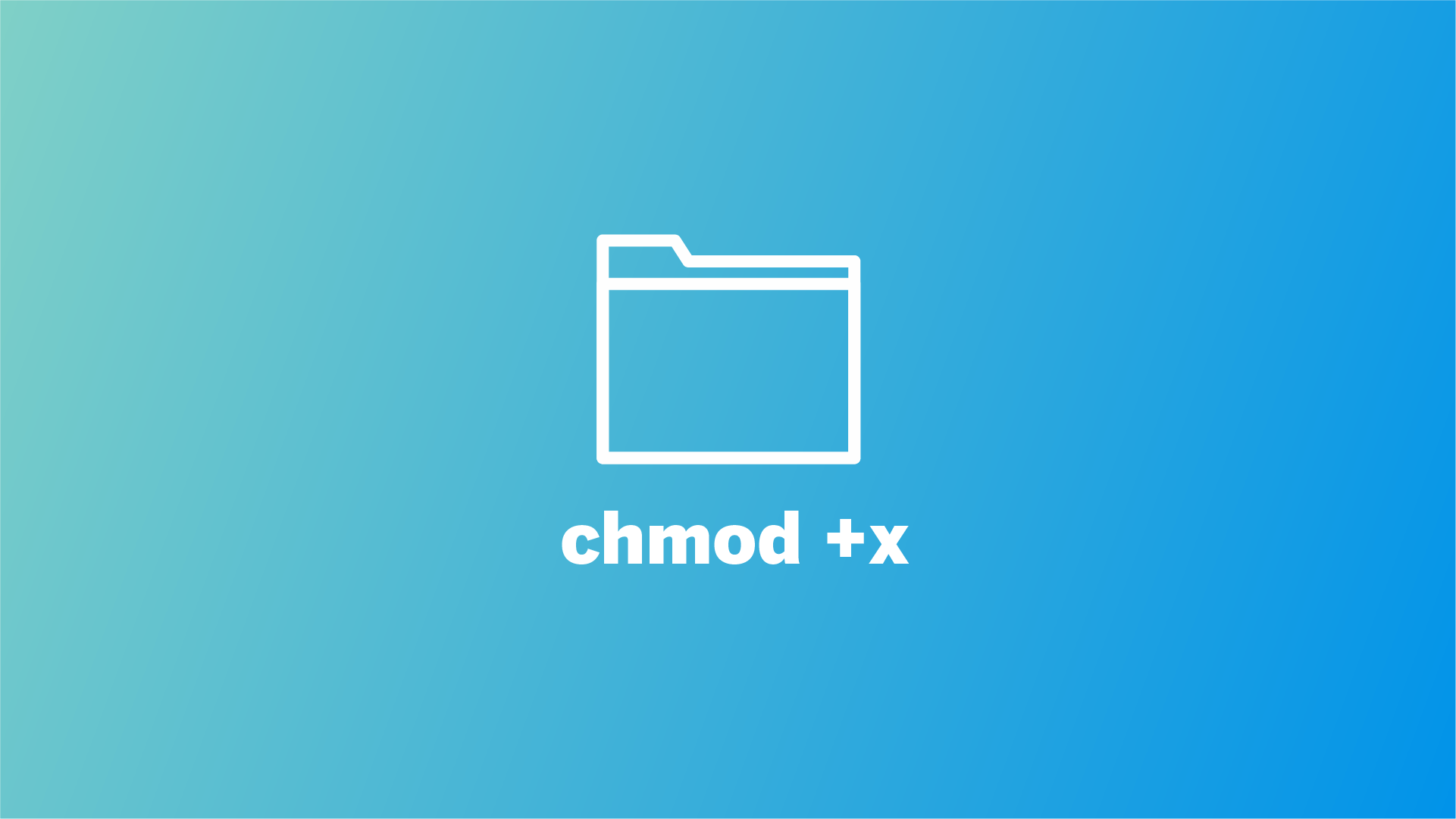In Linux and Unix, files have three distinct permissions: read, write, and execute. Each permission serves its own purpose, with the execute permission specifically used to make a file executable. To add the executable permission to a file, script, or application in Linux and macOS, we utilize the chmod +x command. This command grants the necessary permission to run the file, allowing it to be executed as a program or script.
In short, the chmod +x command grants executable permission to the owner, group, and others. This command is commonly used in Linux to run scripts or open applications.
Here is the reference table of permission settings after executing chmod +x command.
| Permission | Owner | Group | Others |
|---|---|---|---|
| Read | ✓ | ✓ | ✓ |
| Write | ✓ | – | – |
| Execute | ✓ | ✓ | ✓ |
In this blog post, we will dive into the meaning of the chmod +x command and explore when and why you should use it. Additionally, I will address some frequently asked questions to provide further understanding chmod +x command.
Table of Contents
Understanding File Permissions in Linux
In Linux, file permissions are vital in managing access and control over files and directories. There are three main types of users in Linux: owner, group, and others. Each user category has its own set of permissions.
| User | Description |
|---|---|
| Owner | The owner is the user who created and owns the file or directory. They possess read and write attributes, enabling them to create, modify, or delete the file. Only the owner or the superuser (root) can change permissions for a file or directory. |
| Group | The group consists of members who share common file permissions. The group can be assigned read, write, and execute permissions, which apply to all group members. |
| Others | Others refer to all users who do not fall under the owner or group categories. They lack ownership or group membership. The owner or superusers determine the permissions granted to others. Others may have read, write, or execute permissions depending on the settings. |
In Linux, each user is assigned three types of permissions to manage files and directories: read, write, and execute. Here is a reference table of permissions available in Linux and their short description.
| Permission | Symbol | Description |
|---|---|---|
| Read | r | Allows users to read, view, and download files. |
| Write | w | Enables users to write content, create, modify, or delete files. |
| Execute | x | Permits users to execute files, launch applications, or run scripts. |
| No permission | – | Restricts users from reading, writing, or executing files or directories. |
These permissions can be represented in two ways: symbolic representation and numeric representation. Symbolic representation uses symbols like “r,” “w,” and “x,” while numeric representation employs digits ranging from 0 to 7. Each digit represents a specific permission set.
There are various symbols utilized in symbolic notation to manage file permissions, with each symbol representing a distinct operation. Here is a reference symbol table with a short description of their operation.
| Symbol | Description |
|---|---|
+ | Adds permission to the specified user. |
- | Removes permission from the specified user(s). |
= | Sets the specified permissions, replacing any existing permissions. |
For instance, suppose you have a file named myscript.sh, and you wish to grant read, write, and execute permissions to the owner, read and write permissions to the group, and read-only permission to others. In that case, you would execute the following command:
chmod u=rwx,g=rw,o=r myscript.shu=rwx: Sets read, write, and execute permissions for the owner.g=rw: Sets read and write permissions for the group.o=r: Sets read-only permission for others.
Now that you have learned the basics of Linux file permission let’s decode chmod +x commands in the next section.
What Does chmod +x Mean?
The chmod +x command is used to add execute permission for all users, including the owner, group, and others. Its primary purpose is to make a file executable. For example, if you have a script named ‘install.sh’ and attempt to run it without executing permission, the terminal will display a “permission denied” message.

Before executing the script, you need to grant it executable permission by using the chmod +x command:
chmod +x install.shchmod: This is the command line tool for managing file permissions in Linux and Unix-like systems.+x: This argument implies the addition of execute permission for all users.
A more accurate notation for the chmod +x command is:
chmod a+x install.shThis command adds exactly the same permission as chmod +x command.
Safer Alternative to chmod +x Command
Executing the chmod +x command on a file grants execute permission to all users, which may not always be desirable. However, if you are the superuser (root user), you can add execute permission exclusively to the owner of the file.
To add execute permission to the owner, only use the following command
chmod u+x script.shBy executing this command, you add execute permission only to the file owner, leaving the permissions for the group and other users unaffected.
How to Add Execute Permission Using chmod +x Command
To add execute permission to a file, use the following steps
Step 1: Locate the File
First, locate the file for which you want to add execute permission. Open the terminal in the directory where the file is located, or navigate to the directory using the cd command. For example, if your script is located in the “Download” folder, you can navigate to it with the following command:
cd /home/user/DownloadExecuting this command will take you to the target directory.
Step 2: Verify Current Permissions
Before modifying the file’s permissions, checking its current permissions is a good practice. This can be done using the ls -l command. It will display the existing permissions of the files.
ls -l
Step 3: Execute the chmod +x Command
To add execute permission to the file, you can use the chmod +x command with the following syntax:
chmod +x filenameBy executing this command, you will add execute permission for all users to the specified file.

Step 4: Verify the Changes
After executing the chmod +x command, verifying the changes made to the file’s permissions is recommended. You can do this by using the ls -l command again.
ls -lThis command will display the updated permissions associated with the file.

When to Use chmod +x Command?
There are several use case that fits well with chmod +x command. Here are a few examples of when you can use the command
1. Running Shell Scripts
Shell scripts contain a series of bash commands that need to be executed sequentially. These scripts typically have a .sh extension. By default, shell scripts are not executable when created. To run a shell script, you need to add the execute permission to the file. The chmod +x command can grant the executable permission to the shell script.
2. Executing Binary Files
Binary files are used to package applications for Linux systems. Whether you compile a binary from source code or download it, you often need to add execute permission before executing the binary file. For example, if you download the Google Chrome web browser for Linux, it will be provided as a binary file. Before installing and running the application, you need to grant it execute permission using chmod +x.
3. Launching Programs and Scripts
The chmod +x command is also useful for launching various programs and scripts. For example, you may have a Python script or a compiled program you want to execute. By granting execute permission using chmod +x, you can run these programs directly from the terminal without explicitly specifying the interpreter or using the ./ prefix.
These are just a few examples where the chmod +x command will find more use cases of this command.
Frequently Asked Questions (FAQ)
Conclusion
In this blog post, I’ve covered the basics of file permission in Linux, what does chmod + x command mean, and how to use this command effectively. I’ve also provided frequently asked questions to clarify your understanding of the chmod +x command.




